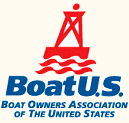Hurricane Sandy Heads North: The Perfect Storm for the Northeast?
OutdoorHub 10.25.12

BoatUS Urges Boaters to Prepare
She’s just a day old – and even though no hurricane watches or warnings have yet been posted for the eastern US – Hurricane Sandy is getting some big time attention from forecasters because of unique circumstances that could make her more threatening. Some the forecast models predict Sandy will move into the Northeast next week, merging with another weather system with the potential to form a “Perfect Storm.” Boat Owners Association of The United States (BoatUS) says regardless of how the predictions pan out, boaters need to take heed.
“It gets more interesting as we get closer to the weekend,” said BoatUS Director of Damage Avoidance Bob Adriance. “A lot could change, but if you’re a boat owner anywhere from the mid-Atlantic to New England, moving up your winter haul-out plans before the storm arrives would be a good idea.” And if you can’t, you won’t regret taking some basic hurricane preparation steps now to help keep your boat safe if this storm touches down near you. “Regardless of whether Sandy meets up with the Great Lakes cold front for a storm of ‘historical proportions’ as one weather blogger put it, heavy rains and gusty winds could impact much of the Northeast,” added Adriance.
Basic, heavy weather preparation includes removing all sails and biminis, clearing the decks of any removable equipment, making sure scuppers and drains aren’t blocked, and adding extra lines and chafe gear. If deck scuppers and drains aren’t cleared of fall leaves, heavy rains can sink a boat stored in the water, even if it is docked inland at a protected location, or cause water damage to a boat stored on the hard.
Vessels in slips on open water with little wave protection are most vulnerable. The best plan is to remove the boat and store it on high ground. BoatUS has found that when storing boats ashore, using tie-downs secured from deck cleats to anchors embedded in the concrete pad or screwed into the earth with helical anchors can nearly eliminate most storm damage.
Trailerboats should be stored away from trees with the bow up and the drain plug out, with any loose gear removed, and a rope or strap cinched tight securing the boat firmly to the trailer. If a boat cannot be removed from a boat lift, the drain plug should also be removed and the vessel tied securely to its lifting machinery.
BoatUS.com/hurricanes offers easily downloadable storm planning materials including up-to-the-minute storm tracking tools with live satellite images, a hurricane preparation worksheet, an in-depth Boater’s Guide to Preparing Boats and Marinas for Hurricanes, and checklists for what to do before and after a hurricane strikes. Sample hurricane plans for boat and yacht clubs are also offered.
Any boat owner seeking the services of a professional delivery captain to move a vessel to a safer location can go to the BoatUS Captains Locator at BoatUS.com/procaptains. Boaters can also sign-up to receive advisories from the National Hurricane Center as they are issued, as well as detailed maps of the forecast track, wind bands and more at Boatus.com/hurricanes/signup.asp.

